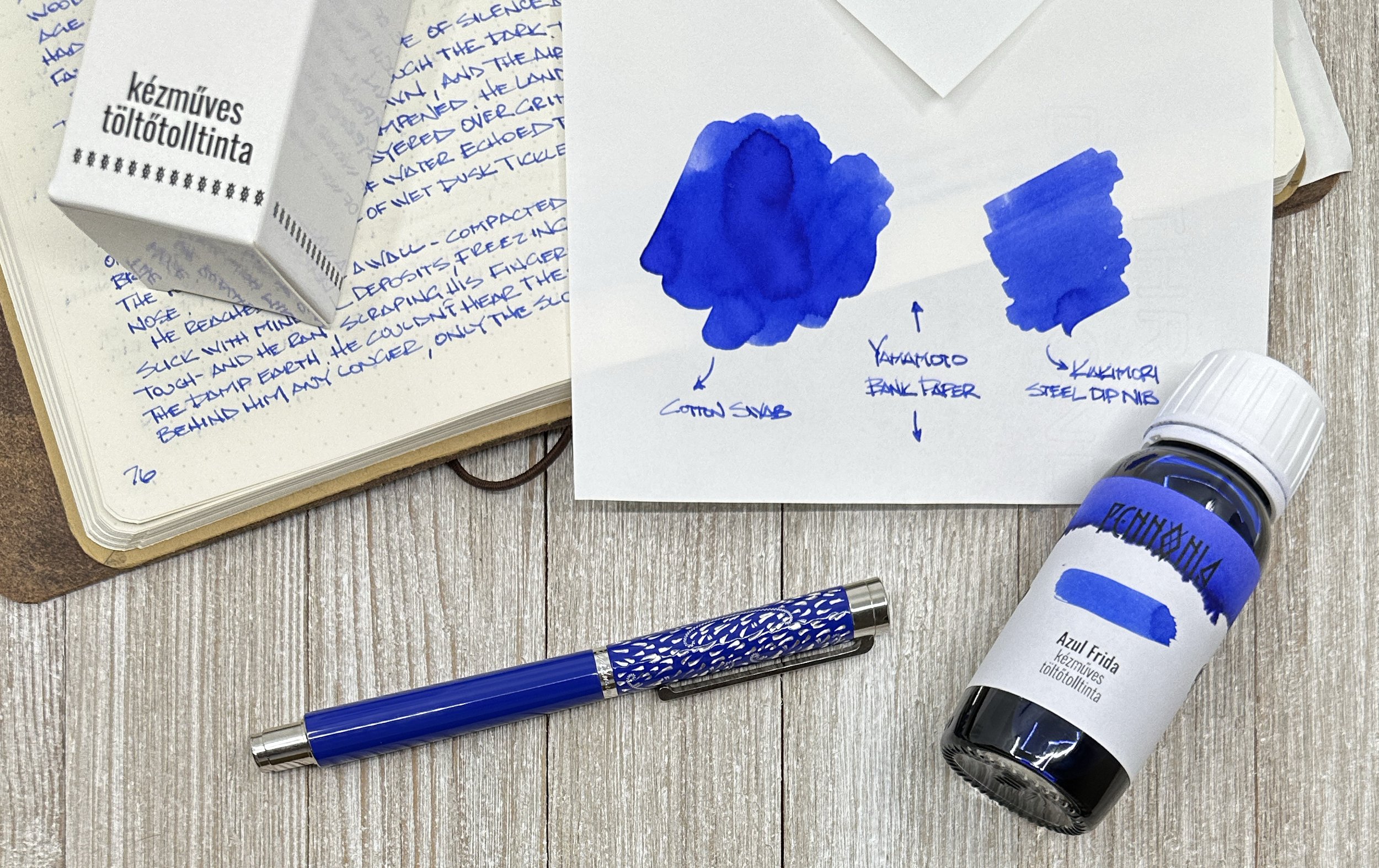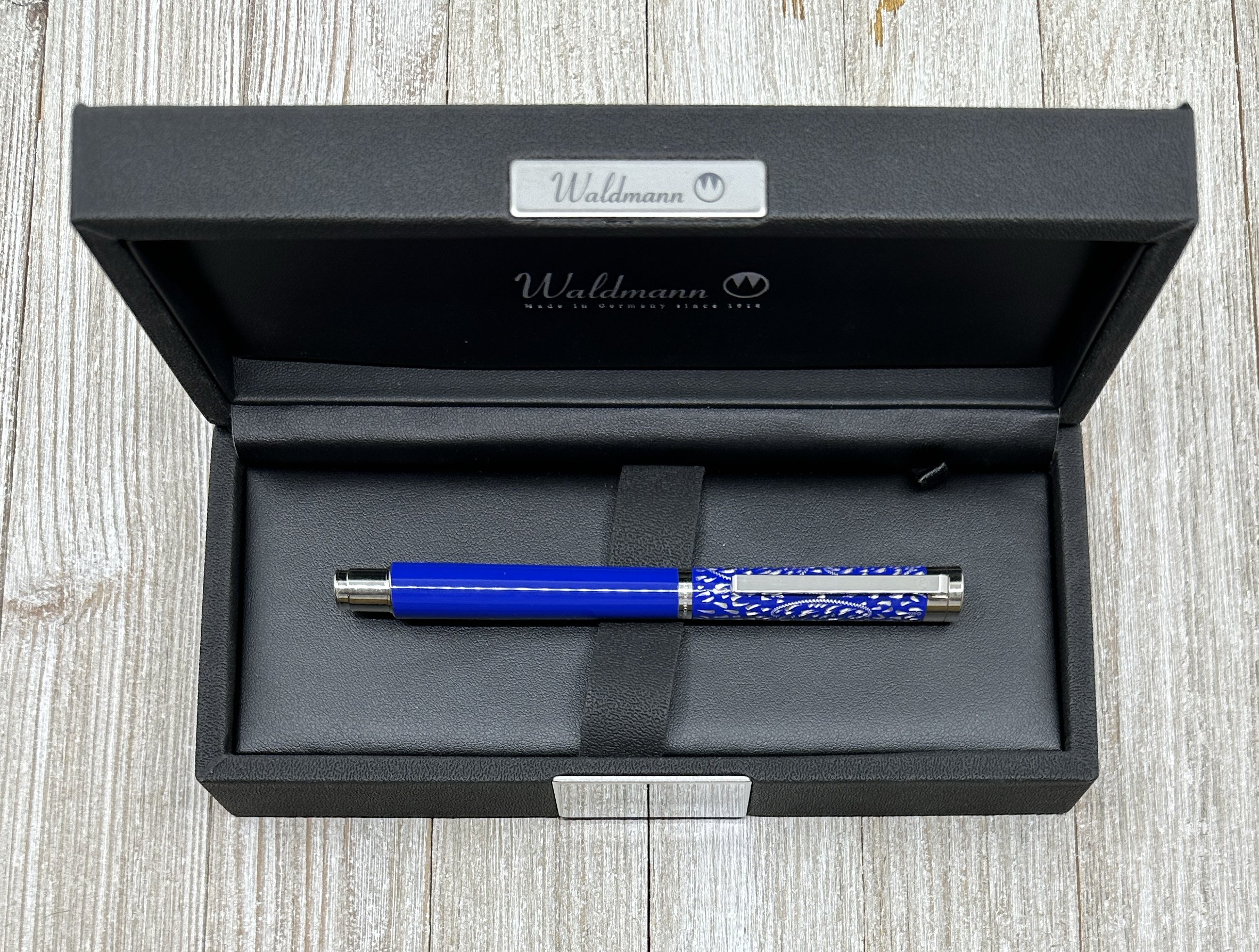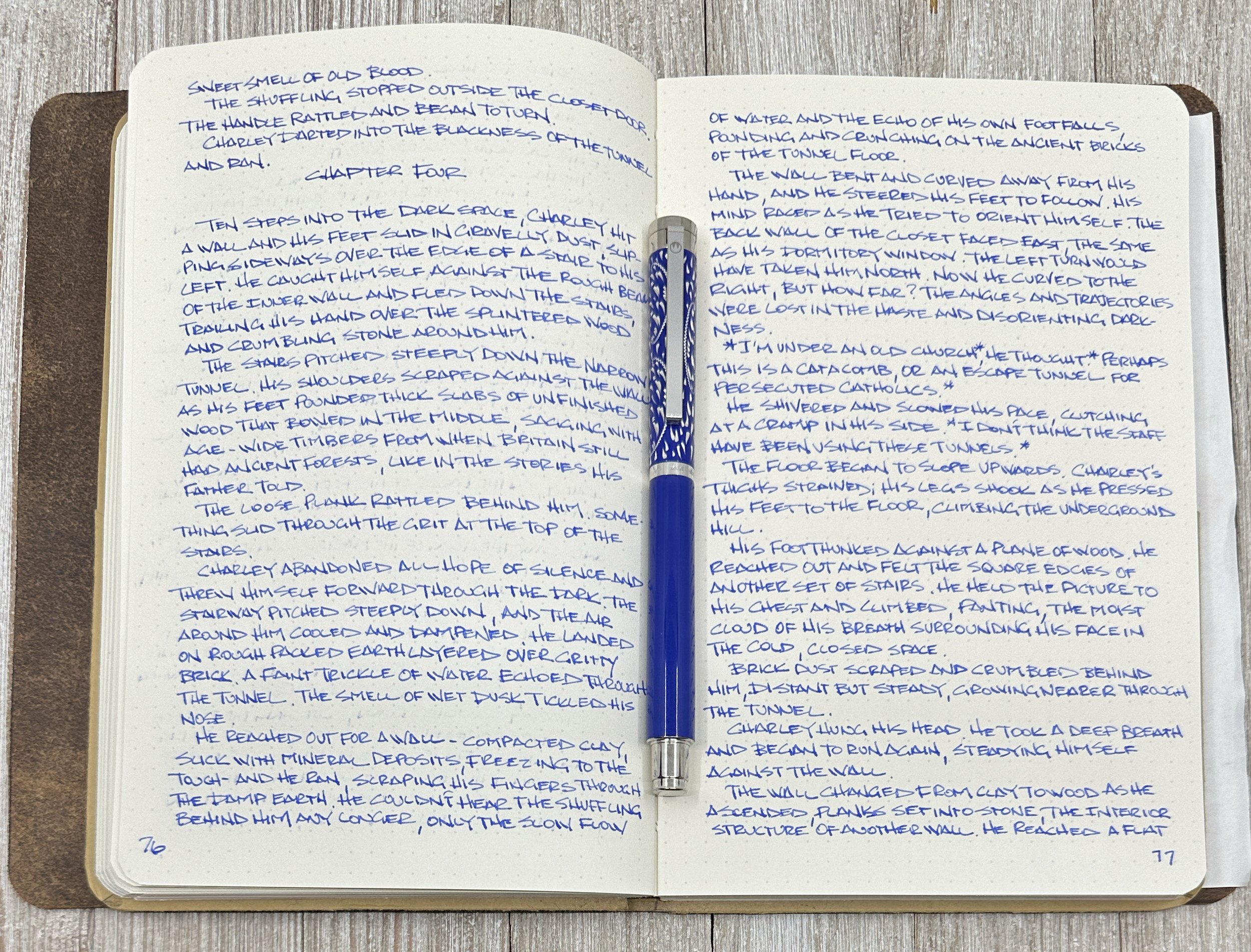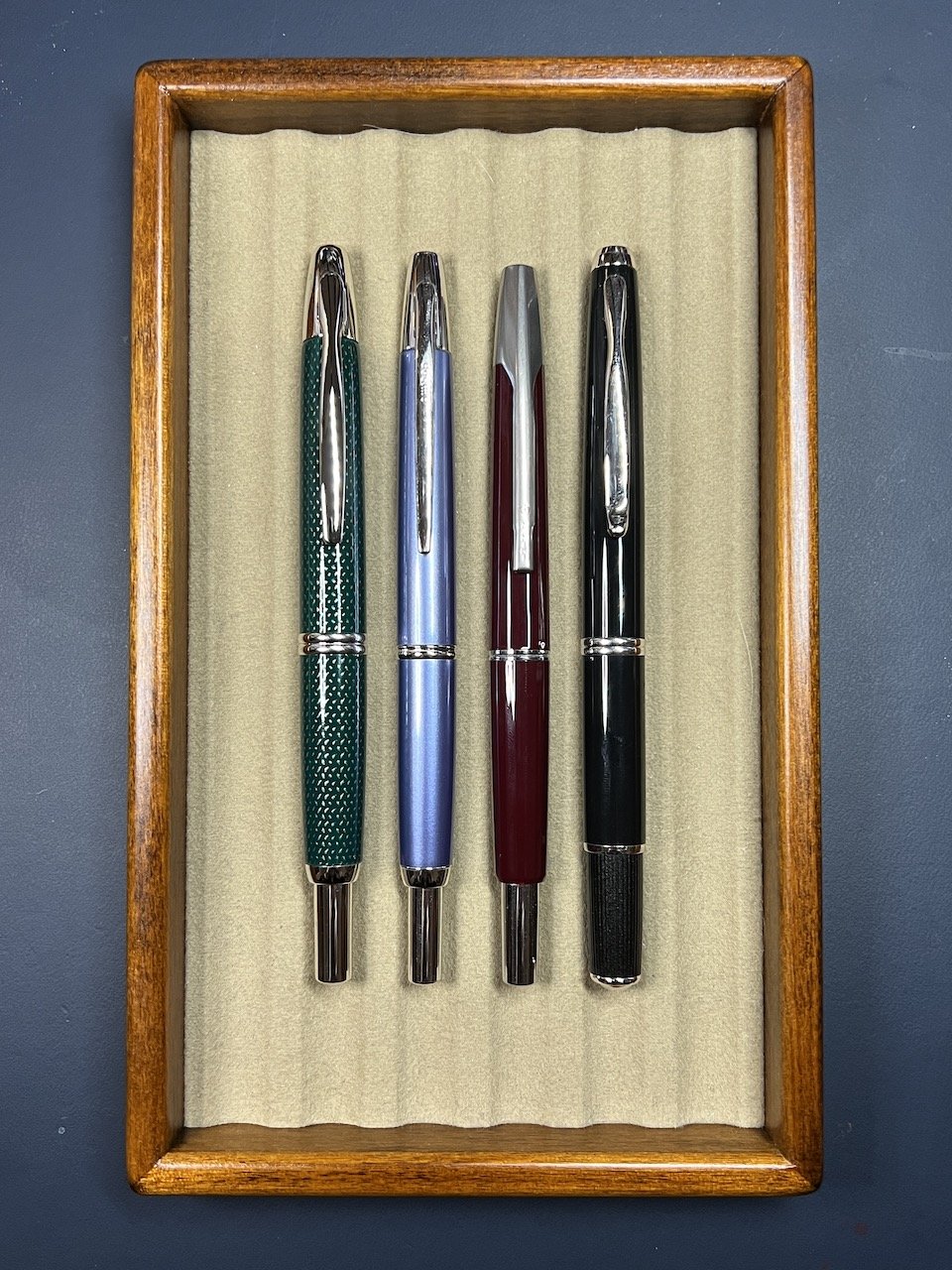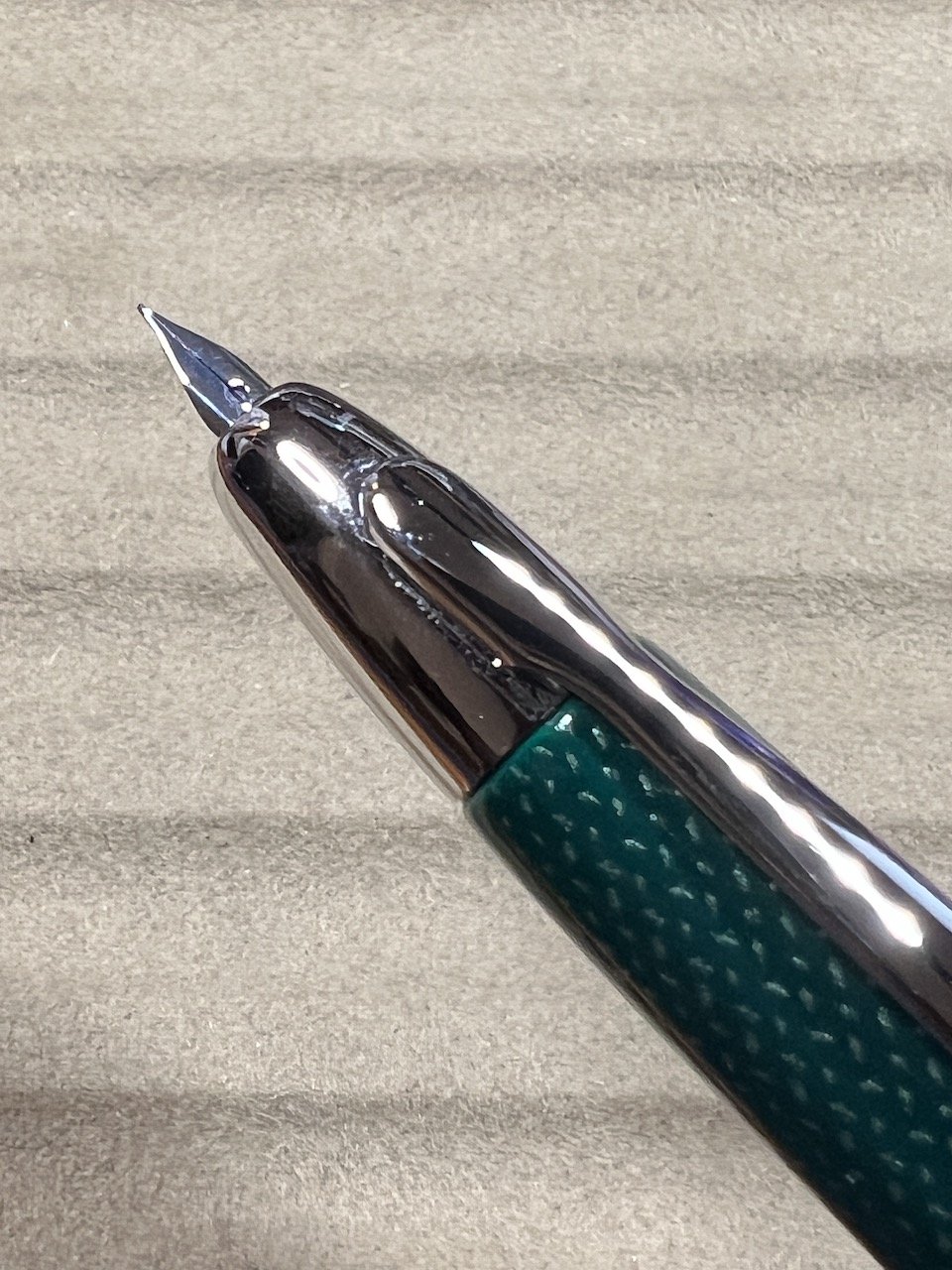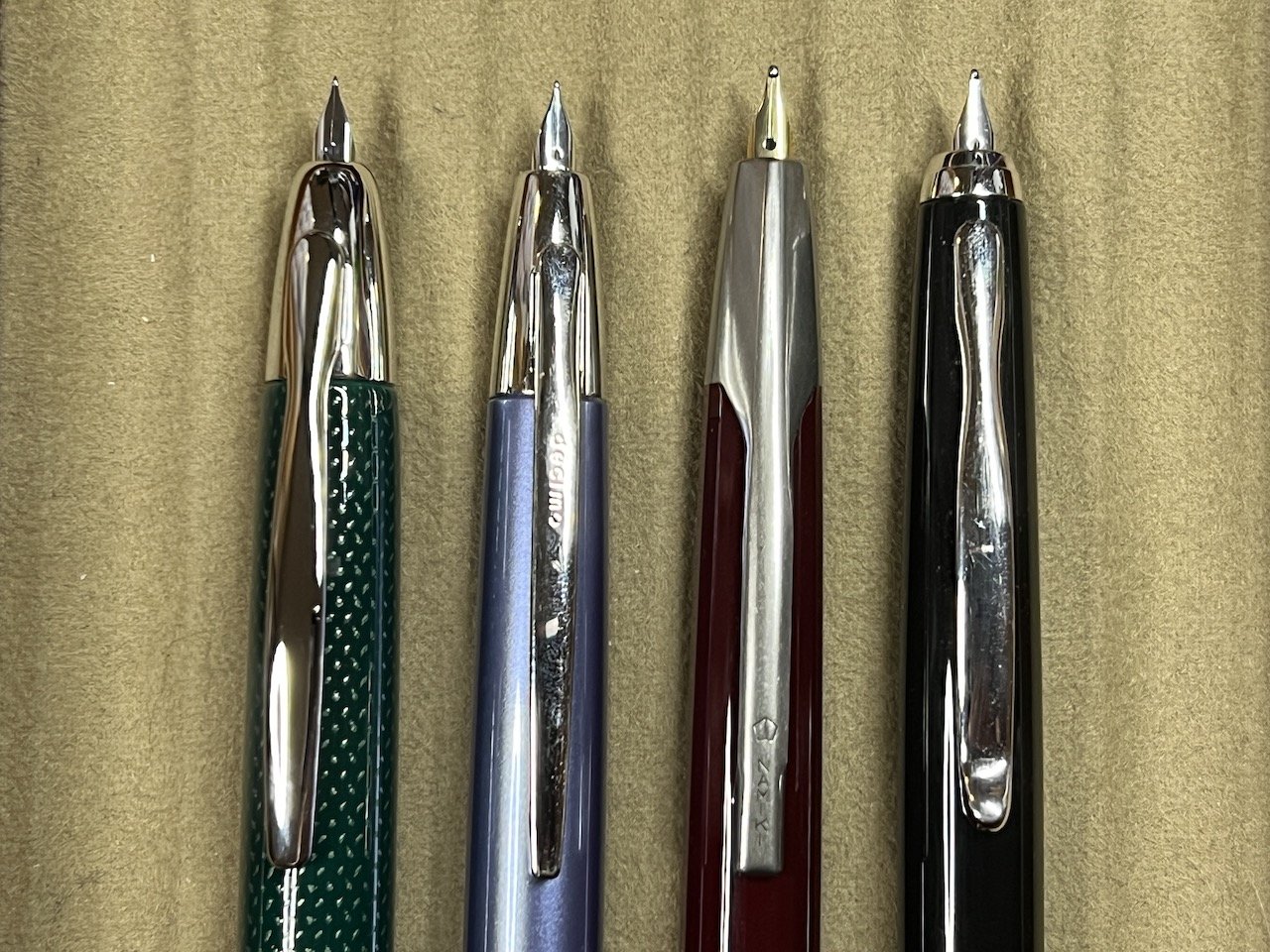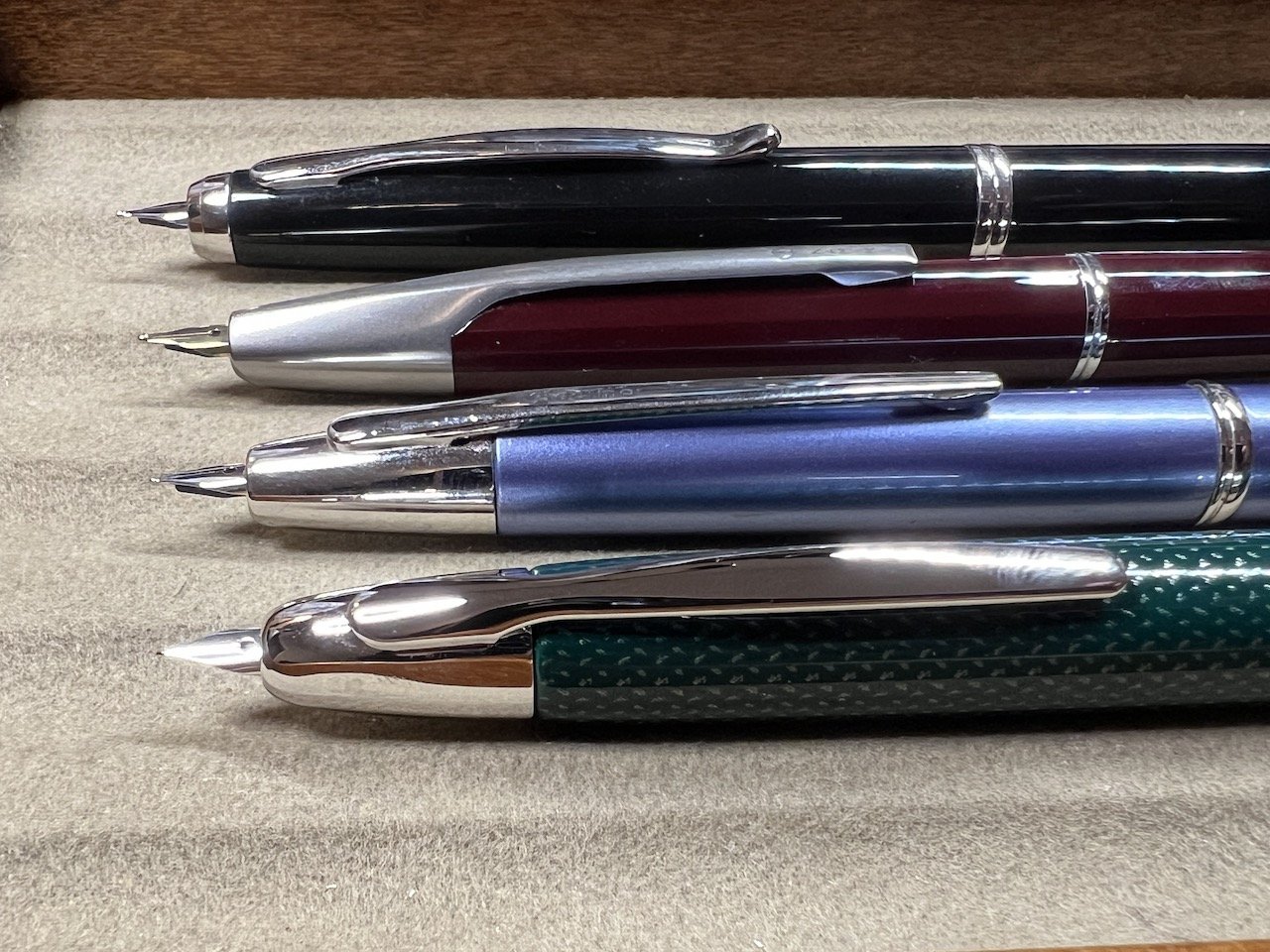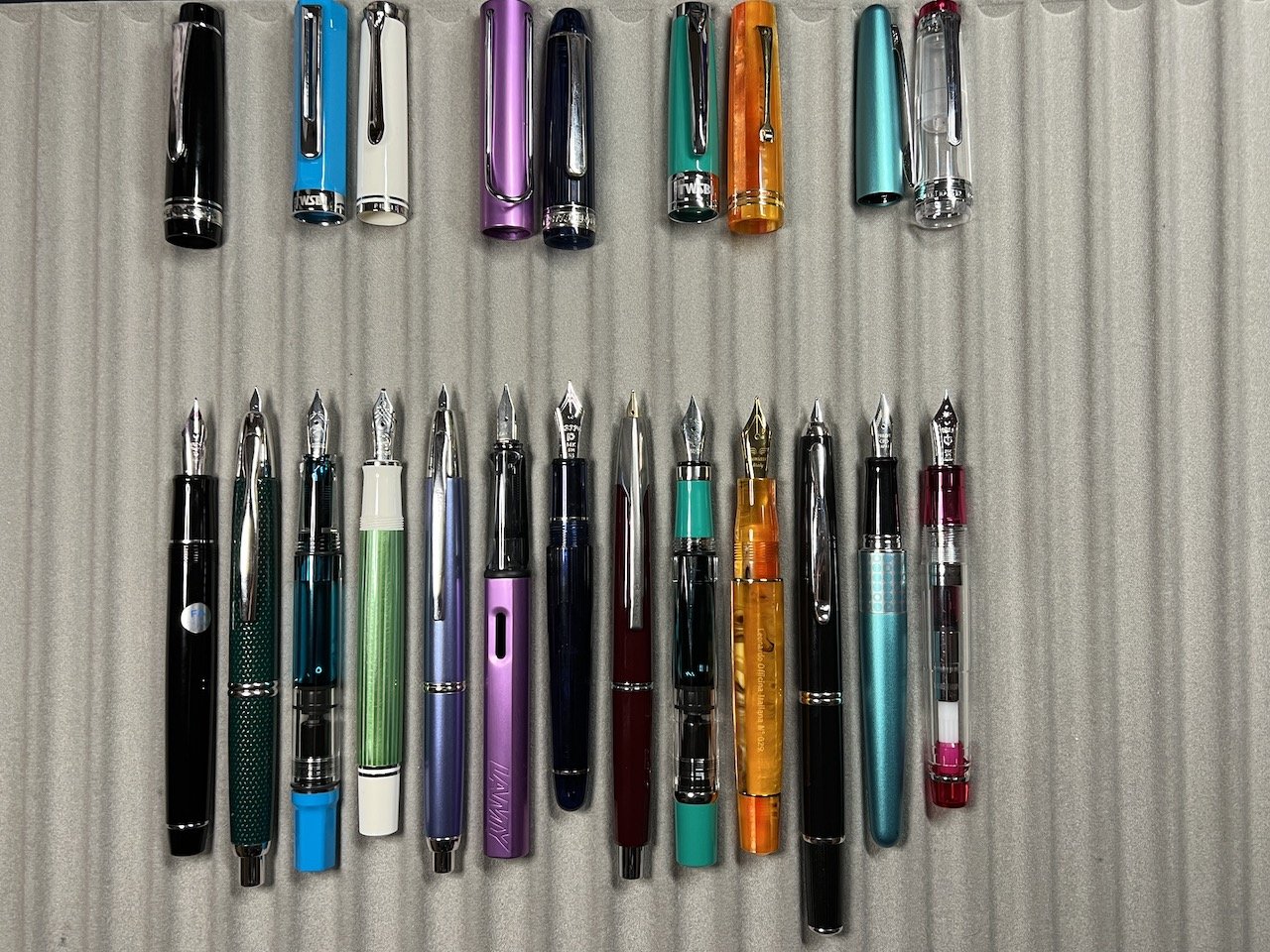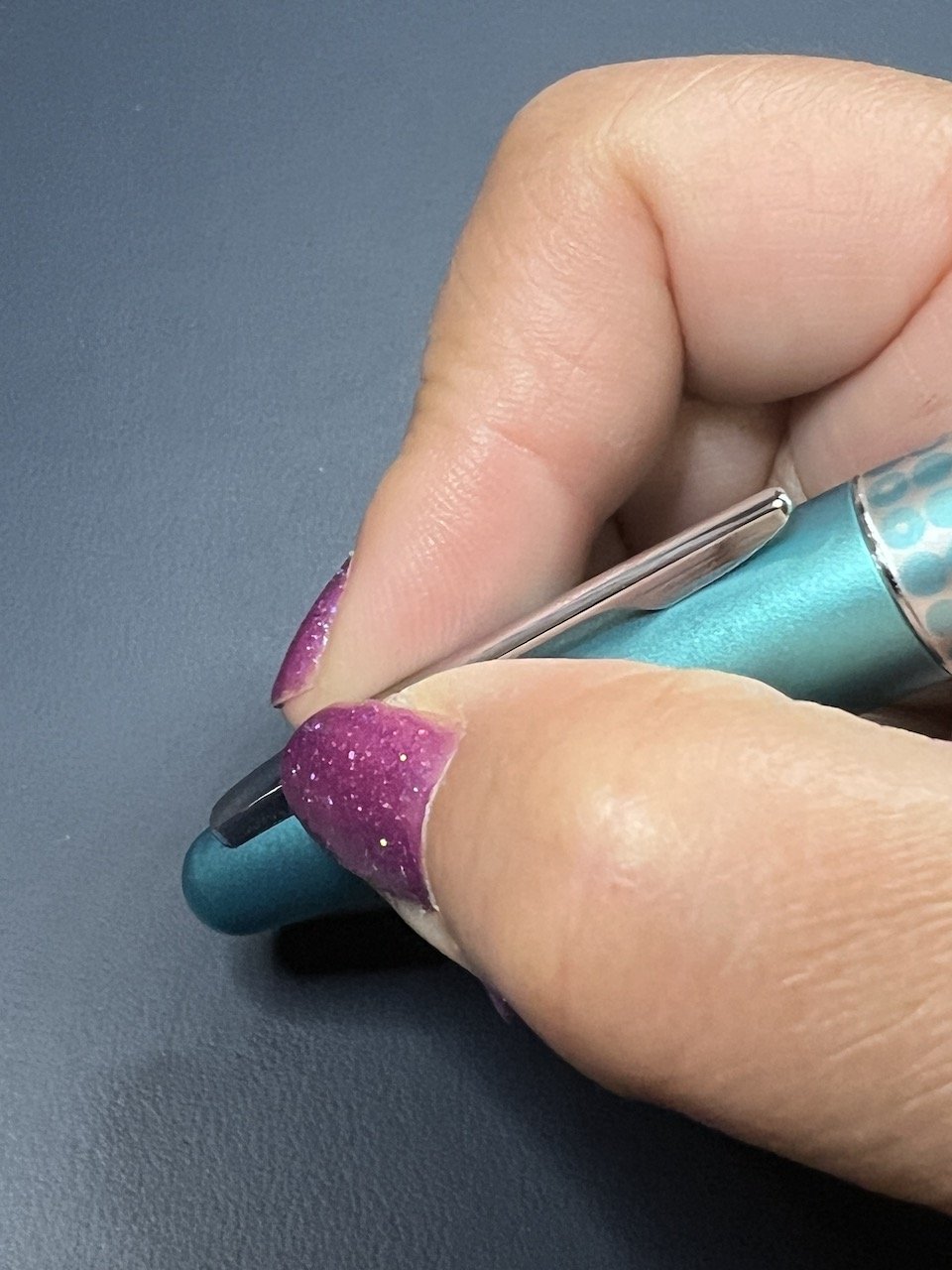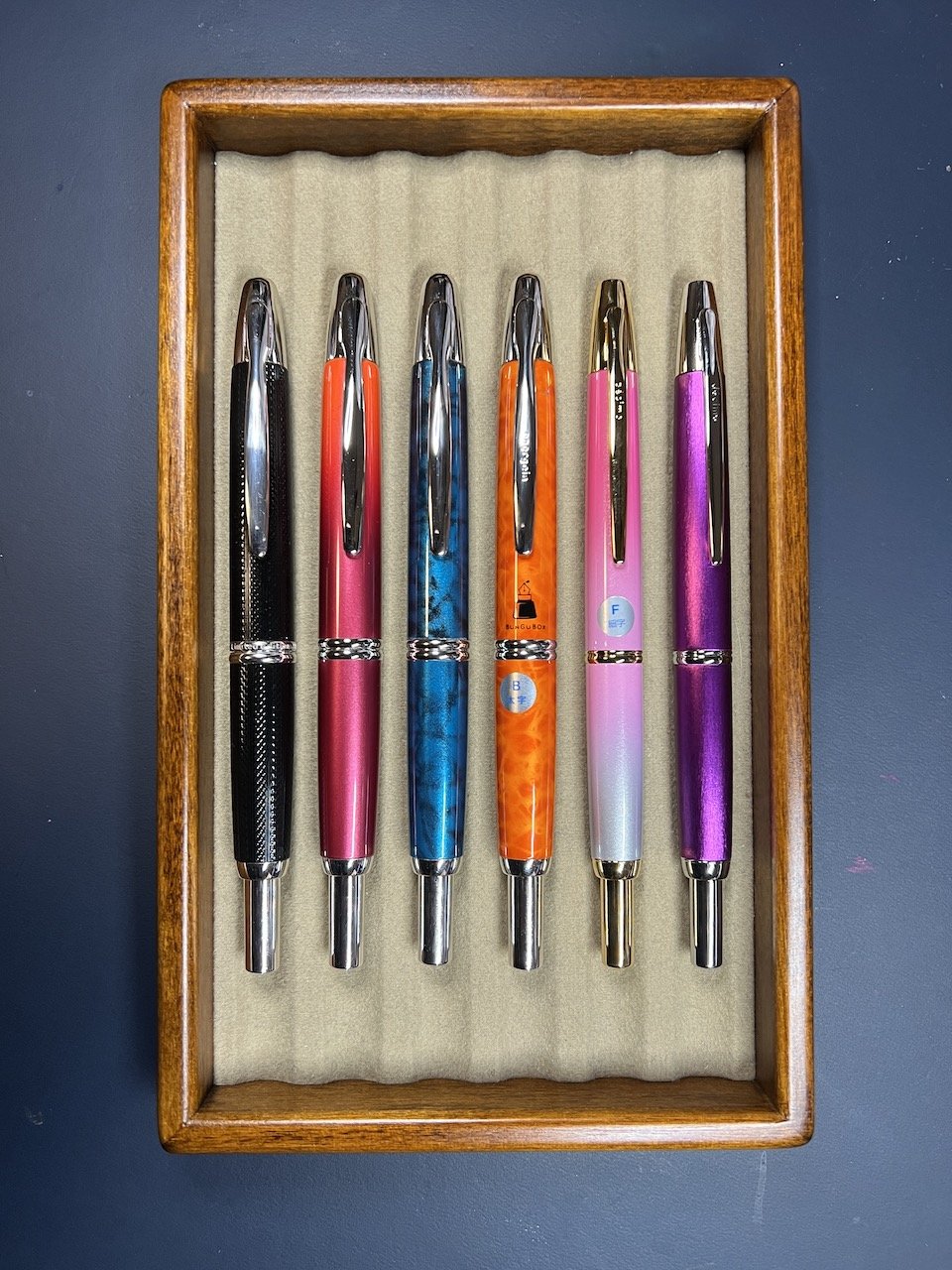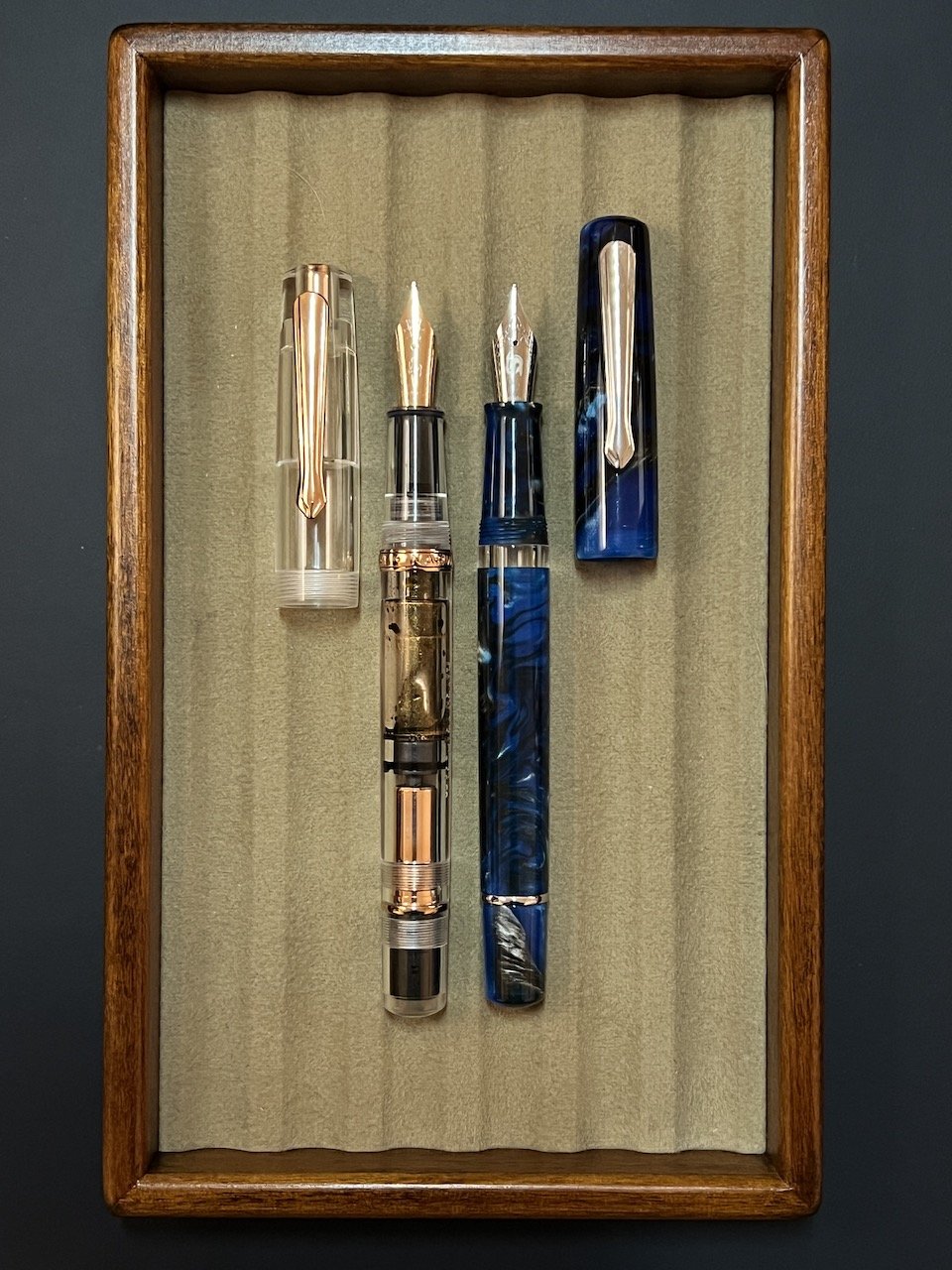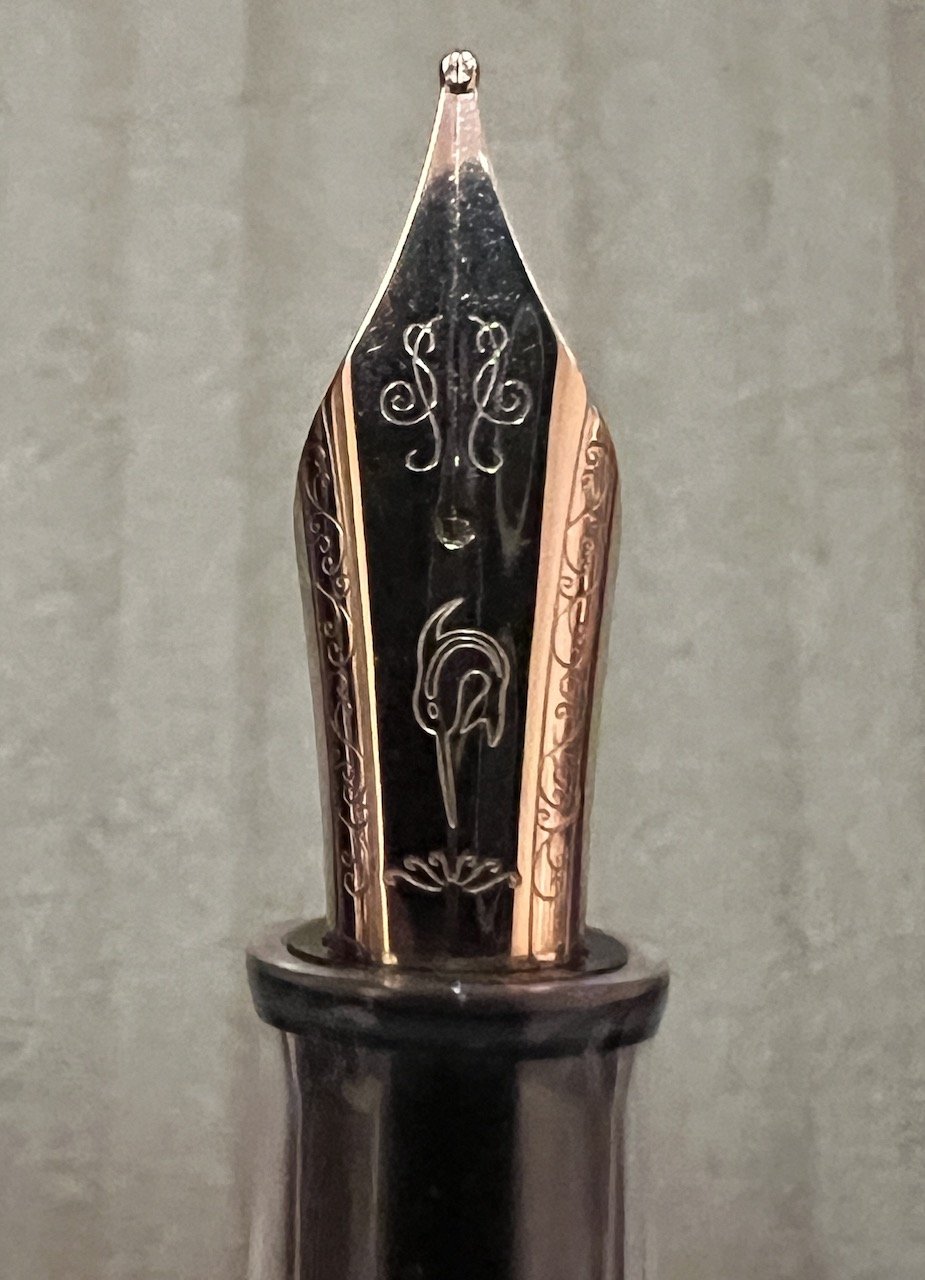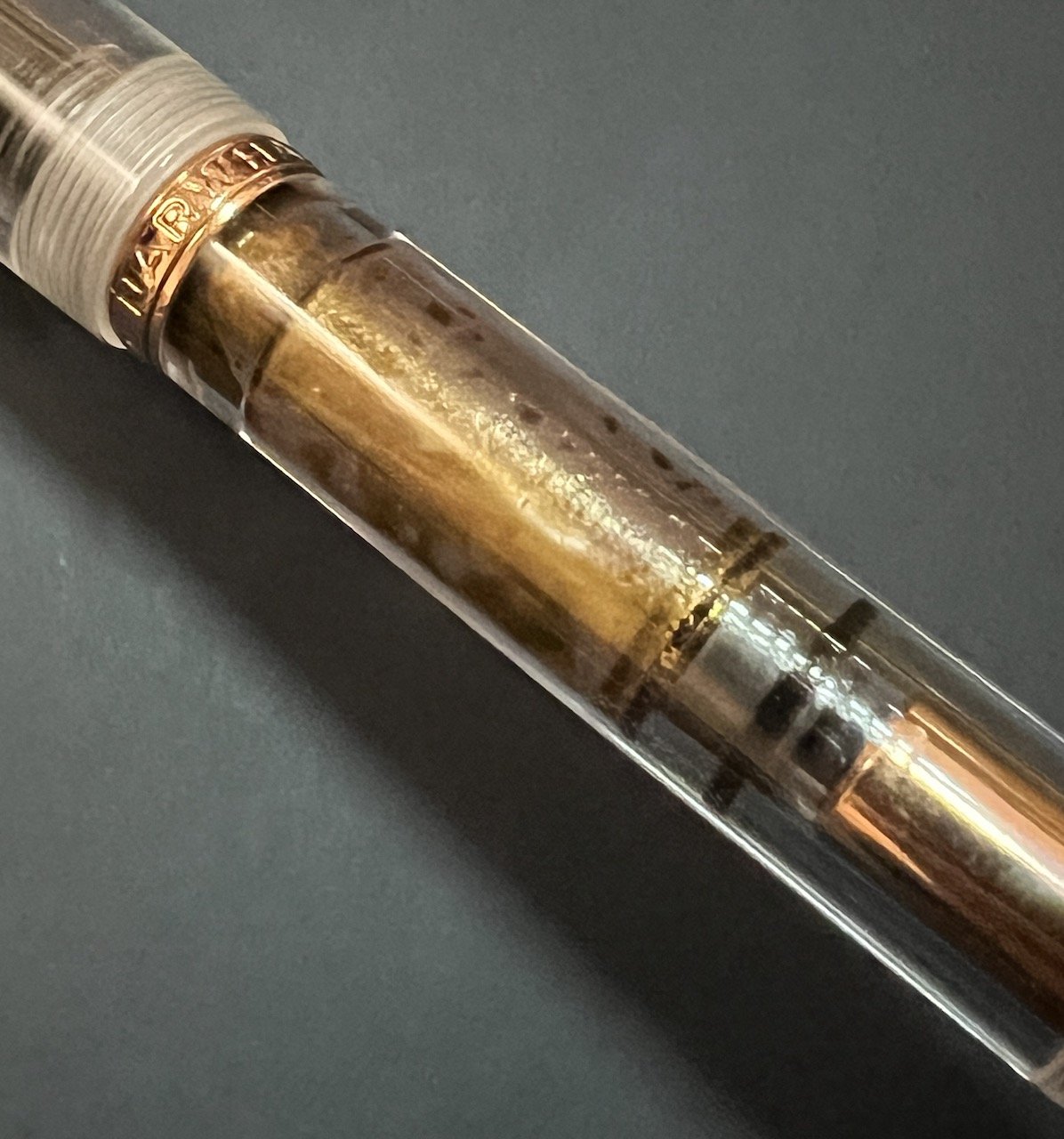I did my first pairings party a few weeks back with the Onoto Scholar and Ferris Wheel Press Central Park Greens, and this week I’m back with another matchy-matchy combination that I’m loving in the Waldmann Xetra Vienna and Amarillo Stationery Azul Frida.
Beginning with the Waldmann, the Xetra Vienna puts the brand’s craftsmanship on full display. I knew this pen was a stunner with its polished blue lacquer and platinum plated parts, but I had no idea the cap pattern was hand-engraved. Not only does it look amazing, but it makes each pen in this series unique.
The Xetra Vienna is a standard length fountain pen, but with a narrow diameter. This shape leads to a requisitely narrow grip section, and #5-sized nib. My review model features an 18k Fine gold nib, but there is a stainless steel option as well.
This narrow barrel fits right into my preferences for writing. While I am comfortable using many pen shapes and sizes, I do prefer the narrow side of the ledger, so keep that in mind when I tell you how much I enjoy writing with this pen. Those who prefer bigger, wider pens may want to wait and see about the next Waldmann I will be reviewing.
I’ve had the Xetra Vienna in my writing rotation for a few weeks now, and it has been great. The added weight of the metal barrel balances out the narrowness, making for a comfortable writer. I mixed in a longer copy writing session for my long-running “The Bone Weaver’s Orchard” project, and the feel of the pen removed itself completely from the occasion. It morphed into my hand, the ink flow never stopped, and I had nothing to think about other than the text I was reading, and writing.
It was a great experience.
Adding to the writing experience was the perfect match of Pennonia Azul Frida, made for Amarillo Stationery. Inspired by Casa Azul, the long-time home of artist Frida Kahlo, this is a classic, bright blue that will feel right at home in any pen, especially one as perfect as the Xetra Vienna.
I’ve used a couple of Pennonia Inks, and the consistent performance of Azul Frida matches my experience with the rest. Great flow, excellent color saturation, and good dry time - all universally loved ink properties. As a bonus, what looks like a basic blue has hints of purple underneath, as seen in some of the ink swatches on different paper types - Yamamoto Bank Paper, for example.
I always want a classic blue on hand, and one with and added story and added character, like Azul Frida, is right up my alley.
Top to bottom: Sailor King of Pen Sky, Platinum 3776 Chartres Blue, Waldmann Xetra Vienna, Lamy 2000 Stainless Steel.
My first experience with Waldmann was last year, when Kimberly let me test out one of hers. In general, the designs of this 100 year-old German brand aren’t a perfect style match for myself, but my goodness was the writing experience nice. That alone put them on my radar, especially as they continue to release interesting models.
The Xetra Vienna runs $319 with a steel nib, and $439 with an 18k gold nib, as seen in this review. The price feels right for the level of quality and craftsmanship. And Waldmann has well over a dozen different styles to choose from, ranging from $200 on up. While I don’t have one in my collection today, it won’t me long before one makes the cut and I add it to list.
(Luxury Brands of America loaned the Waldmann to The Pen Addict. Amarillo Stationery provided the ink at no charge.)
Enjoy reading The Pen Addict? Then consider becoming a member to receive additional weekly content, giveaways, and discounts in The Pen Addict shop. Plus, you support me and the site directly, for which I am very grateful.
Membership starts at just $5/month, with a discounted annual option available. To find out more about membership click here and join us!

